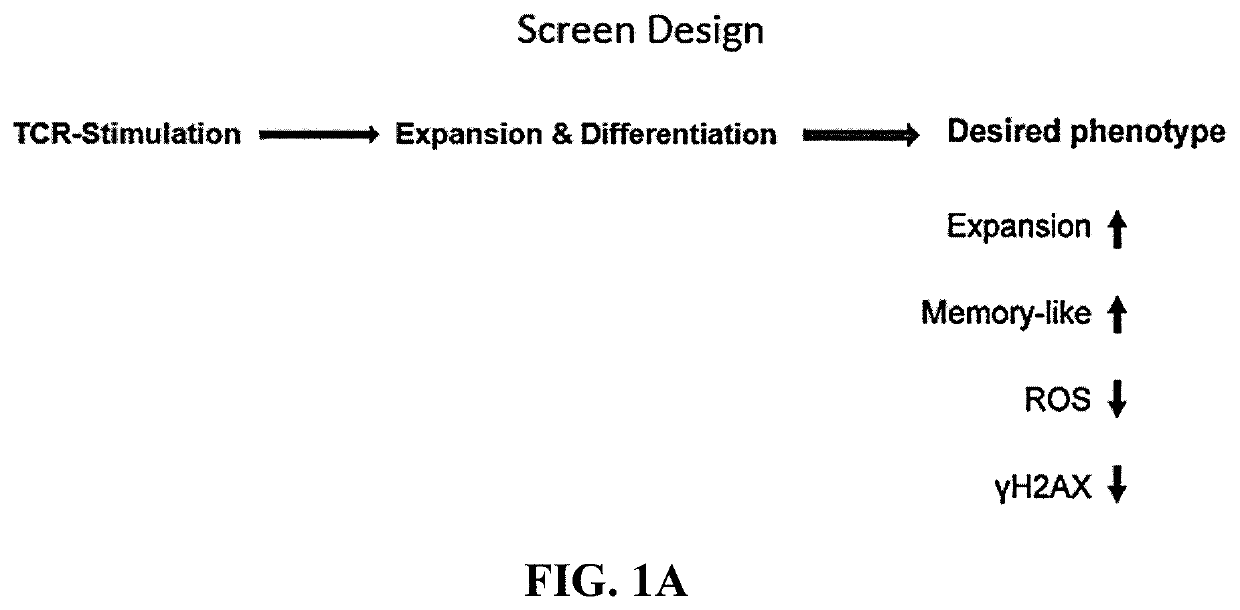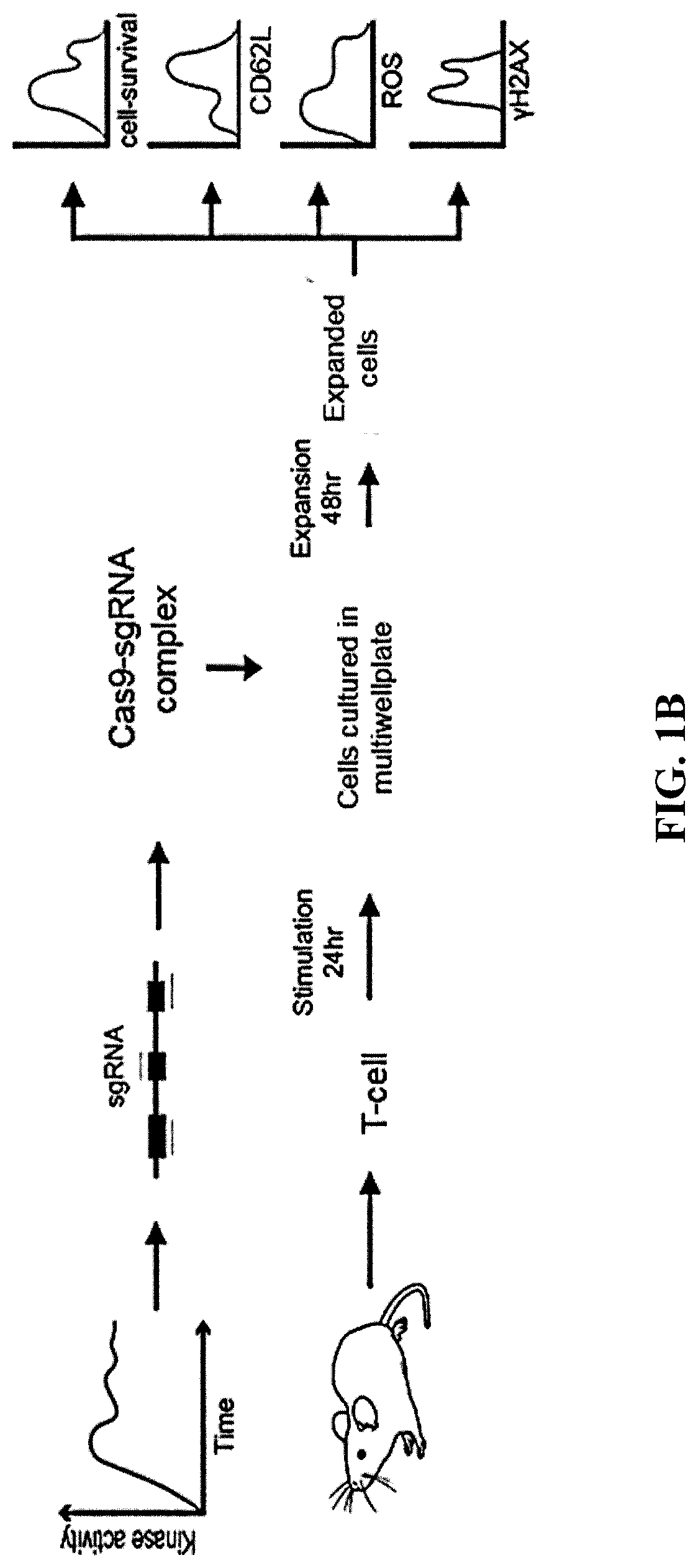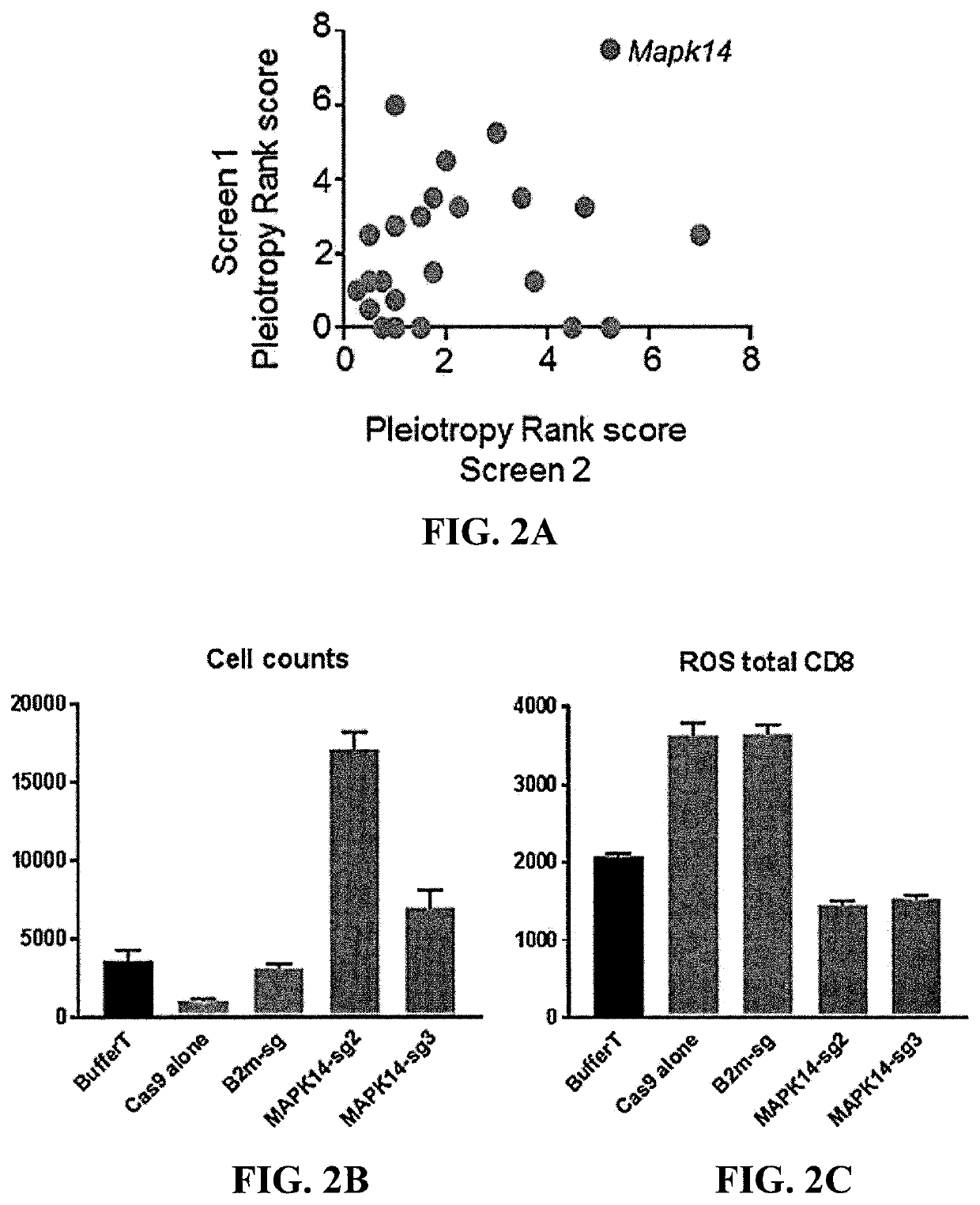Methods of producing t cell populations using p38 mapk inhibitors
a technology of mapk inhibitors and t cell populations, which is applied in the direction of genetically modified cells, antibody medical ingredients, drug compositions, etc., can solve the problems of many obstacles to the successful use of act for cancer and other diseases
- Summary
- Abstract
- Description
- Claims
- Application Information
AI Technical Summary
Benefits of technology
Problems solved by technology
Method used
Image
Examples
example 1
[0102]This example demonstrates that knockout of p38 MAPK gene expression using CRISPR-Cas9 produces T cells with a favorable phenotype for ACT.
[0103]The MAPK14 gene encodes p38 MAPK. Expression of the MAPK14 gene was disrupted using the CRISPR-Cas9 system with MAPK14 sgRNA2 or sgRNA3 (FIGS. 1A and 1B). T cells treated with buffer, Cas9 alone, or B2m sgRNA served as controls. Pleiotropy rank score, cell counts, and the reactive oxygen species (ROS) of total CD8 T cells was measured. The results are shown in FIGS. 2A-2C. As shown in FIGS. 2A-2C, knockout of p38 MAPK gene expression using CRISPR-Cas9 produced T cells with a favorable phenotype for ACT.
example 2
[0104]This example demonstrates that inhibition of p38 MAPK augments genomic fitness, memory-like properties and expansion of the numbers of T cells.
[0105]Mouse T cells were stimulated and the numbers of cells were expanded for 5 days in vitro. The level of activated phosphorylated p38 MAPK in cells with high or low levels of gamma H2AX (an indicator of DNA damage) in the T cells was measured. The results are shown in FIGS. 4A-4B. As shown in FIGS. 4A-4B, the subpopulation of T cells with high gamma H2AX contains higher amount of active phosphorylated p38.
[0106]Mouse T cells were stimulated and the numbers of cells were expanded for 5 days in vitro in the presence of the p38 inhibitor Birb796. The percentages of cells with high levels of gamma H2AX, the percentages of cell counts, and the expression of CD44 and CD62L were measured. The results are shown in FIGS. 4C-4F. As shown in FIGS. 4C-4F, with increases in the dosage of p38 inhibitor (p38i), the DNA damage in cells was reduced ...
example 3
[0111]This example demonstrates that inhibition of p38 MAPK preserves memory-like characteristics of T cells independent of the Akt pathway.
[0112]Mouse T cells were stimulated and the numbers of cells were expanded for 5 days in vitro in presence of 0.5 μM p38 inhibitor. Intracellular staining and FACS analysis was performed to measure phosphorylation of Akt and its substrates in T cells. The results are shown in FIGS. 6A-6J. As shown in FIGS. 6A-6J, inhibition of p38 MAPK preserved memory-like characteristics of T cells independent of the Akt pathway.
PUM
| Property | Measurement | Unit |
|---|---|---|
| pharmaceutical composition | aaaaa | aaaaa |
| TEM | aaaaa | aaaaa |
| length | aaaaa | aaaaa |
Abstract
Description
Claims
Application Information
 Login to View More
Login to View More - R&D
- Intellectual Property
- Life Sciences
- Materials
- Tech Scout
- Unparalleled Data Quality
- Higher Quality Content
- 60% Fewer Hallucinations
Browse by: Latest US Patents, China's latest patents, Technical Efficacy Thesaurus, Application Domain, Technology Topic, Popular Technical Reports.
© 2025 PatSnap. All rights reserved.Legal|Privacy policy|Modern Slavery Act Transparency Statement|Sitemap|About US| Contact US: help@patsnap.com



